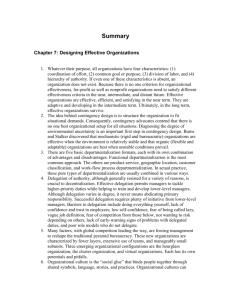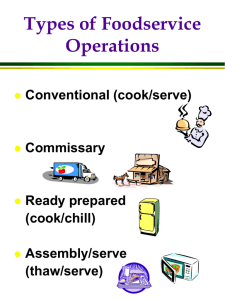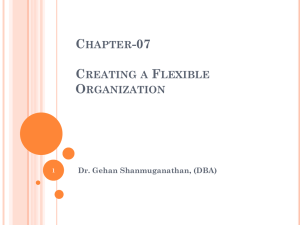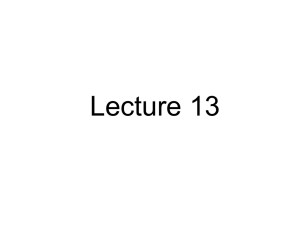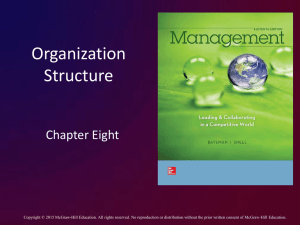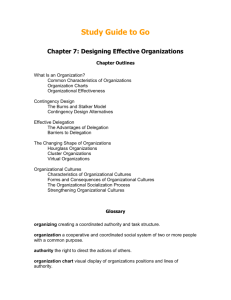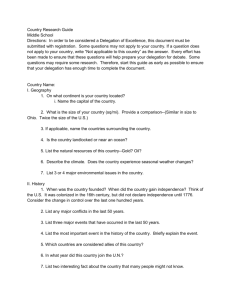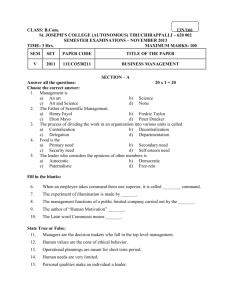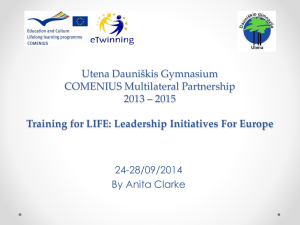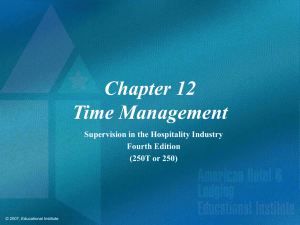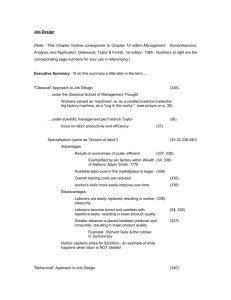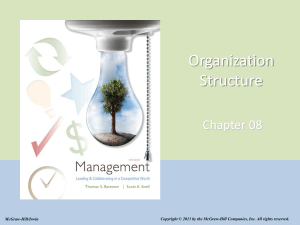Chapter Summary
advertisement
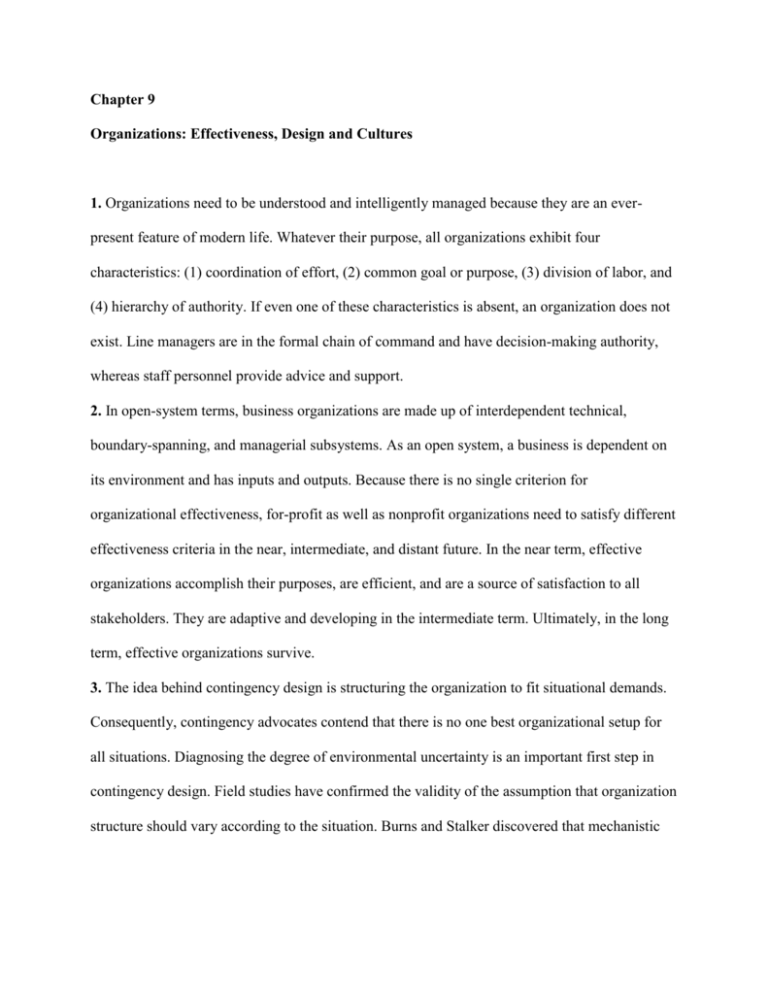
Chapter 9 Organizations: Effectiveness, Design and Cultures 1. Organizations need to be understood and intelligently managed because they are an everpresent feature of modern life. Whatever their purpose, all organizations exhibit four characteristics: (1) coordination of effort, (2) common goal or purpose, (3) division of labor, and (4) hierarchy of authority. If even one of these characteristics is absent, an organization does not exist. Line managers are in the formal chain of command and have decision-making authority, whereas staff personnel provide advice and support. 2. In open-system terms, business organizations are made up of interdependent technical, boundary-spanning, and managerial subsystems. As an open system, a business is dependent on its environment and has inputs and outputs. Because there is no single criterion for organizational effectiveness, for-profit as well as nonprofit organizations need to satisfy different effectiveness criteria in the near, intermediate, and distant future. In the near term, effective organizations accomplish their purposes, are efficient, and are a source of satisfaction to all stakeholders. They are adaptive and developing in the intermediate term. Ultimately, in the long term, effective organizations survive. 3. The idea behind contingency design is structuring the organization to fit situational demands. Consequently, contingency advocates contend that there is no one best organizational setup for all situations. Diagnosing the degree of environmental uncertainty is an important first step in contingency design. Field studies have confirmed the validity of the assumption that organization structure should vary according to the situation. Burns and Stalker discovered that mechanistic (rigid) organizations are effective when the environment is relatively stable and that organic (flexible) organizations are best when unstable conditions prevail. 4. There are five basic departmentalization formats, each with its own combination of advantages and disadvantages. Functional departmentalization is the most common approach. The others are product-service, geographic location, customer classification, and work flow process departmentalization. In actual practice, these pure types of departmentalization are usually combined in various ways. 5. As we have come to realize that situational factors dictate how many people a manager can directly supervise, the notion of an ideal span of control has become obsolete. In a centralized organization, top management retains all major decision-making authority and does a lot of checking up on subordinates. Decentralization, the delegation of decision authority to lowerlevel managers, has been praised as being democratic and has been criticized for reducing top management’s control. 6. Delegation of authority, although generally resisted for a variety of reasons, is crucial to decentralization. Effective delegation permits managers to tackle higher-priority duties while helping train and develop lower-level managers. Although delegation varies in degree, it never means abdicating primary responsibility. Successful delegation requires that lower-level managers display plenty of initiative. Among the barriers to delegation are doing everything yourself, lack of confidence and trust in others, low self-confidence, fear of competition, reluctance to risk depending on others, and poor role models who do not delegate. 7. Many factors, with global competition leading the way, are forcing management to reshape the traditional pyramid bureaucracy. These new organizations are characterized by fewer layers, extensive use of teams, and manageably small subunits. Three emerging organizational configurations are the hourglass organization, the cluster organization, and the virtual organization. Each has its own advantages and pitfalls. 8. Organizational culture is the “social glue” binding people together through shared symbols, language, stories, and practices. Organizational cultures can commonly be characterized as collective, emotionally charged, historically based, inherently symbolic, dynamic, and inherently fuzzy (or ambiguous). Diverse outsiders are transformed into accepted insiders through the process of organizational socialization. Orientations and stories are powerful and lasting socialization techniques. Systematic observation can reveal symptoms of a weak organizational culture.
